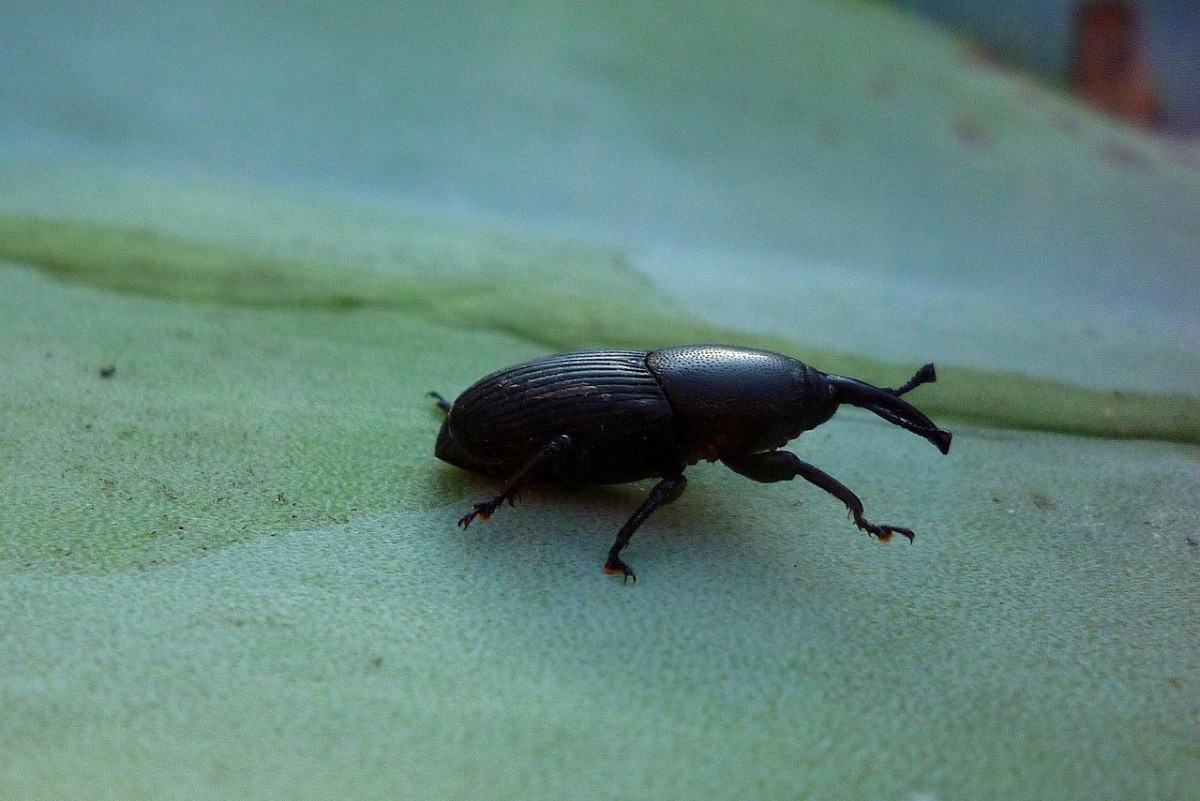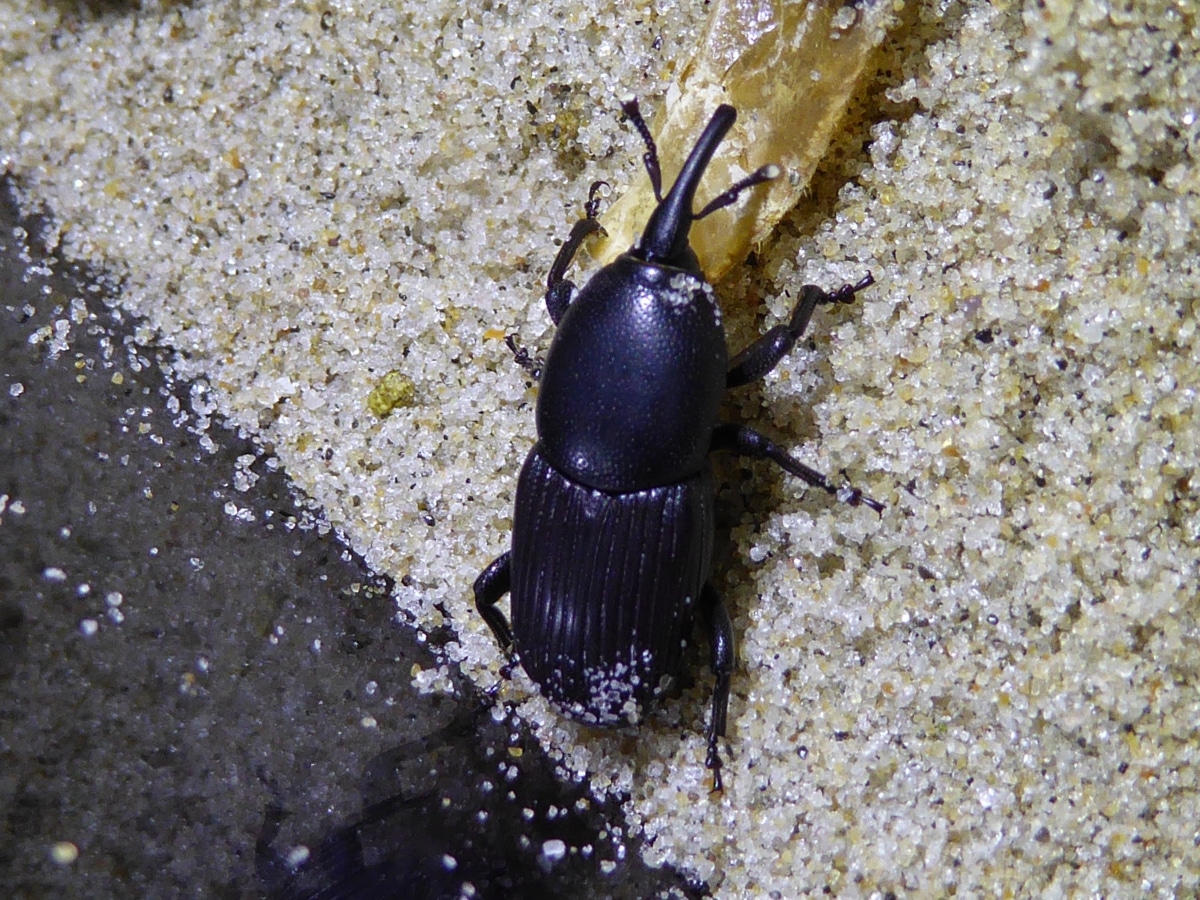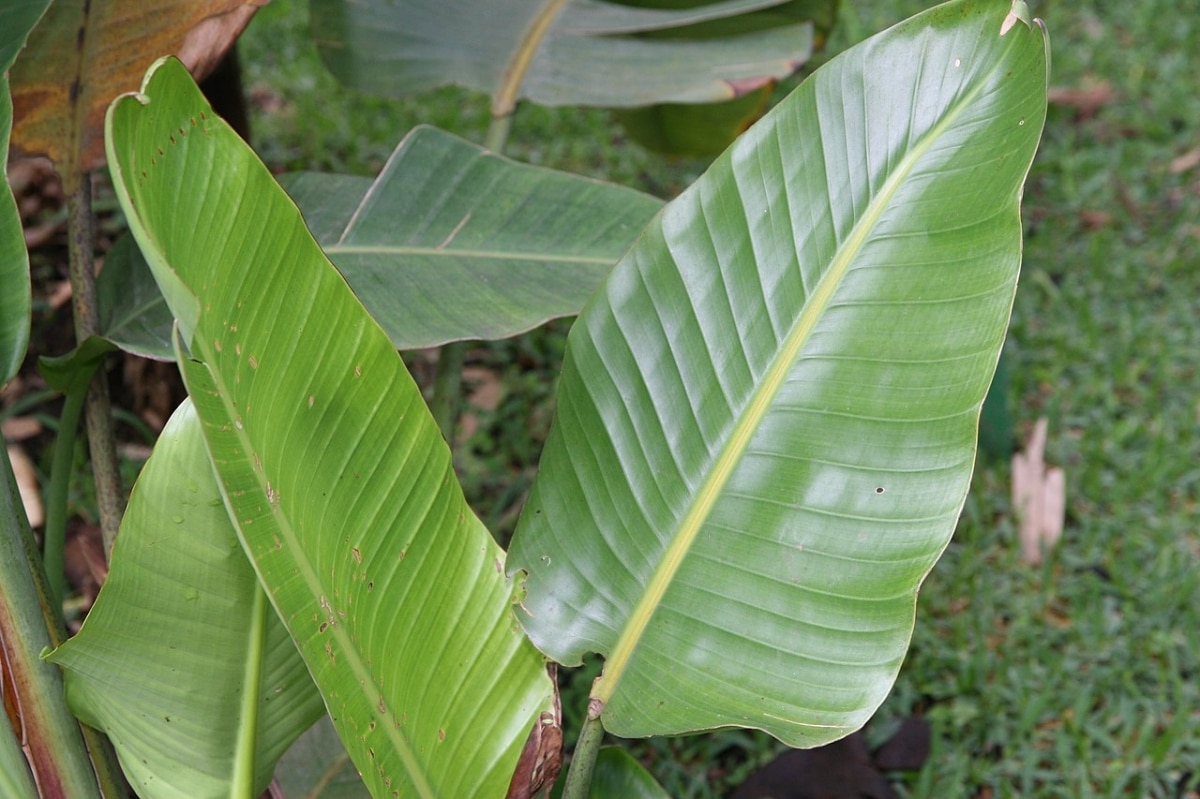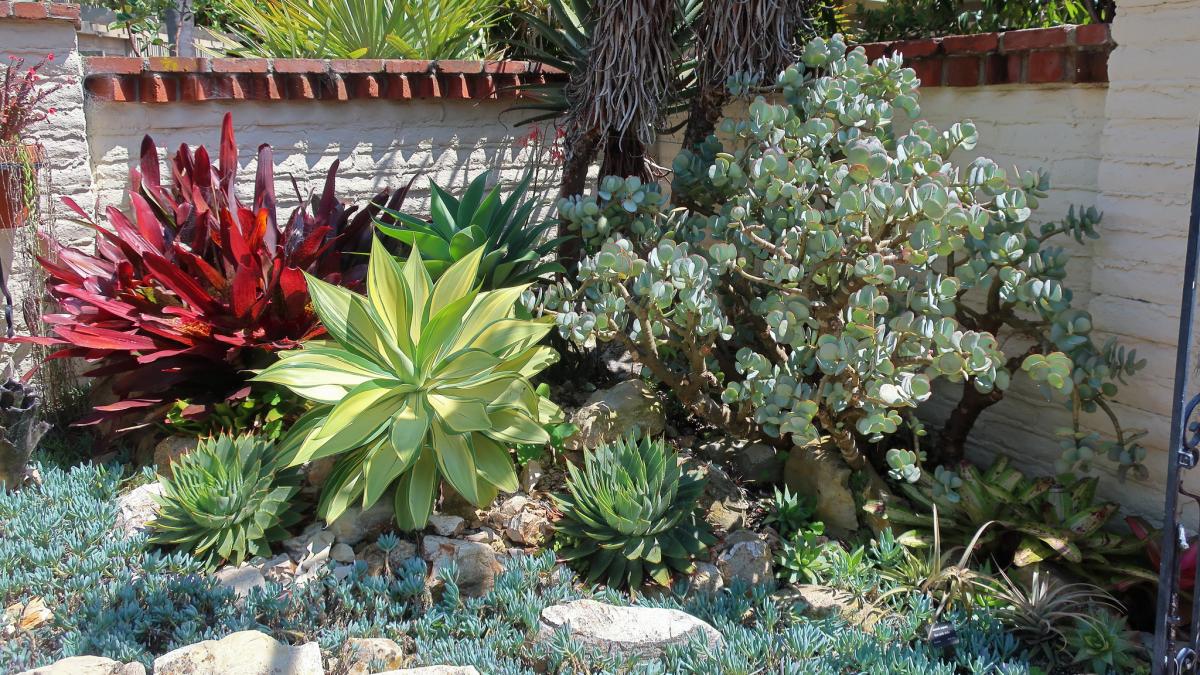
Image - Wikimedia / Nanosanchez
There are more and more exotic pests that our plants must combat if they want to continue. One of them is the black weevil, a species of beetle that can cause serious damage to a wide variety of plant species, including agaves. In fact, it has such a predilection for them that it is well known by the name of the agave weevil.
It is a close relative of the red palm weevil, although they are not affected. Now, just like him, it is a pest that must be detected as soon as possible to save the plant, since otherwise it will be very difficult to achieve.
Origin and characteristics of the weevil

Image - Wikimedia / Cute Little Sweet Rainbow Stag Beetle
The black weevil, whose scientific name is Scyphophorus acupunctatusIt is a plague that comes from America. It is a beetle that, in its adult phase, is about 3 centimeters long and has a long beak, which is what it uses to feed itself. However, in its mature phase it does not pose a serious problem, except when it leaves its eggs on the plants.
And is that the larvae have a great appetite. These destroy soft tissues quickly, so much so that they can end the life of our crops in about 20-30 days, even less if it is summer, since that is when they are most active. They are between 1,8 and 2 centimeters long, and are beige with a brown head.
What damage does it cause to plants?
The symptoms and damage it causes are the following:
- Holes in the blades
- Destruction of soft tissues inside
- Rot, caused by bacteria Erwinia carotovora which is introduced by the weevil itself
- Appearance of opportunistic fungi, such as Aspergillus niger, which accelerate plant rot
- In severe cases, plant death
In addition, the affected plant may smell bad. This is due to both fungi and bacteria, which together quickly weaken it.
What plants does it affect?

Image - Wikimedia / David J. Stang
The weevil affects a wide variety of plants. Of all of them, the main one is agave, but there are others:
- Birds of paradiseStrelitzia reginae, strelitzia augustaEtc.).
- Aloe and Aloidendron
- Pachypodium lamerei and other
- Banana trees (Musa)
However It cannot be ruled out that it also affects the cicas and their close relatives (Dioon, Zamia, Encephalortos, etc.).
How to prevent the weevil from affecting my plants?
Although it is impossible to eliminate the risk of them, there are a series of measures that can (and from my point of view, should be) taken to keep our plants protected. They are as follows:
Buy healthy plants

Image - Wikimedia / cultivar413
This is the basics. Plants are introduced from a wide variety of countries, where they have their own pests and diseases. Administrations have to make sure that they are all healthy, something they achieve thanks to the phytosanitary certificate, which is mandatory to have.
When we go to buy one, we have to make sure it is okay; that is to say, it does not have any kind of problem. If it has holes, black or moldy leaves, and / or it smells bad, it should not be purchased because otherwise we could endanger the plants we have at home.
Eliminate plants highly affected by the weevil
As soon as symptoms are detected, it is best to uproot the plants and burn them, especially if they are very affected (if on the contrary they are still green and look strong, they can be treated). This controls the population of weevils in the area, and prevents it from increasing.
Perform preventive treatments every year
As is done with the Red weevilWith black, several treatments a year must also be carried out so that the plants remain healthy. There are several methods that are:
- Chemical insecticides: Chlorpyrifos + Imidacloprid, as long as they are allowed in our country. It has to be used one month, and the next month the other. They should NOT be mixed, as doing so the plant would die.
- Pheromone traps: like those of kairomonas. These can be put in large gardens, but it is not recommended in small ones since they are very attractive to weevils, and the remedy could end up being worse than the disease.
- Biologic control: in its places of origin it is being seen that the black weevil has natural enemies, such as hunting ants (Ectamomma and Odontomachus) and braconids. They are also present in Spain, but the truth is that their effectiveness depends a lot on when the symptoms are detected. And it is that the sooner it happens, the more chances of survival it will have.
The weevil as food
As a curious fact, we want to tell you that in their places of origin the larvae of the weevil are sold for human consumption, either roasted or roasted. They are said to have a pleasant taste, although I personally don't think I would dare to try them, how about you?
That said, I hope what I have told you about this plague has helped you.